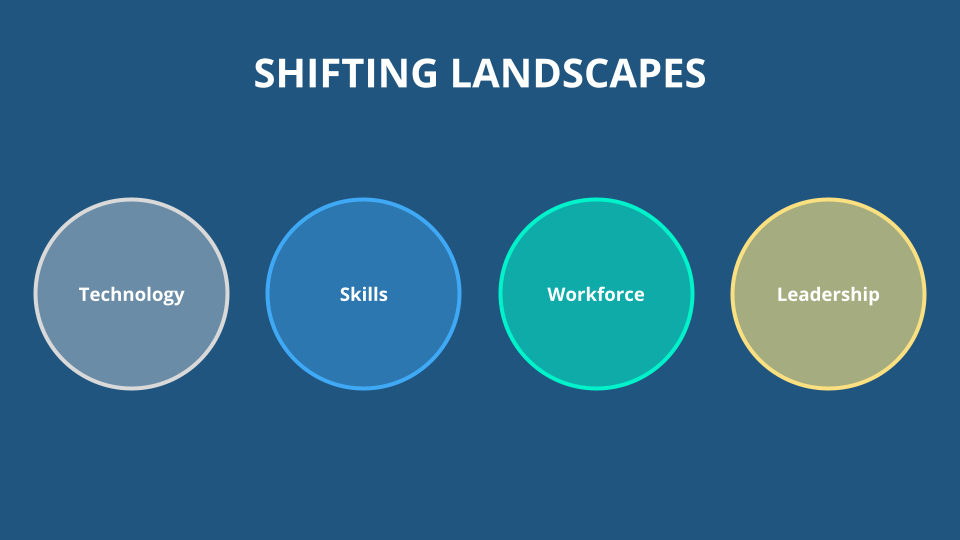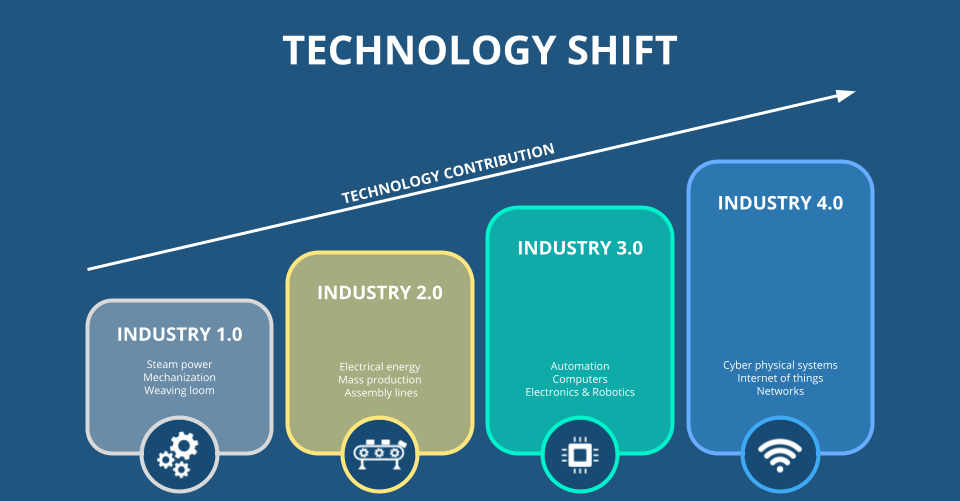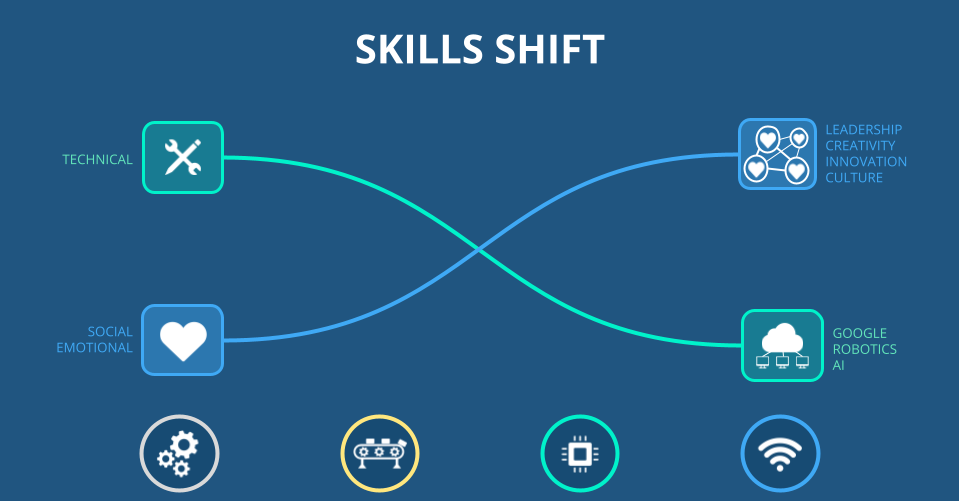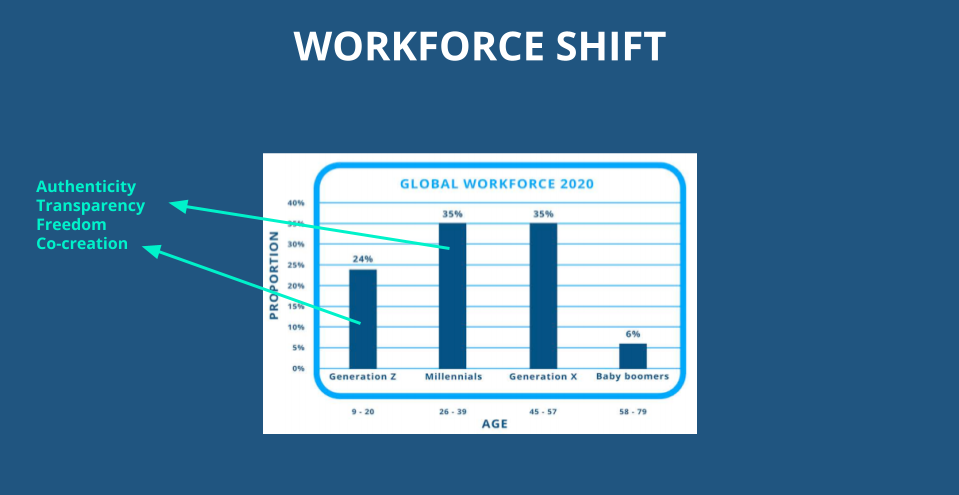Many people are by now familiar with the spectacular rise and fall of Nokia. At one point in their history, they earned more than 50% of the total sales of cell phones globally.
Nokia’s decline was agonising to watch. A company that was once at the top of the food chain – an apex predator in the corporate world – became a bottom feeder.
To put into perspective how significant the apex was, Apple and Samsung have each held in the region of 15-20% of the market share in smartphone sales. In 2007, Nokia was up at 51%. By 2013, that had dropped to less than 5%.
What went wrong? What did Nokia miss that caused them to fail so spectacularly? Nokia failed to navigate the shifting landscapes of their time. And paid a heavy price as a result.
At that stage the primary shift related to technology advancement.
The current world of work, along with the move into Industry 4.0, brings with it even more shifts that management teams must recognise and respond to. These significant shifts occur across four key landscapes: technology, people, skills and leadership.

If companies are to stay relevant, leaders need to avoid the leadership trap that Nokia executives fell into: missing key shifts in the corporate landscape.
If leaders and their companies are to learn from Nokia’s failure and stay relevant in Industry 4.0 they should ask themselves a few critical questions:
- In which leadership paradigm does your leadership team operate?
- Are you responding to the four landscape shifts (technology, skills, people and leadership) at play in the Fourth Industrial Revolution?
- And where will your organisation be if you leave these landscape shifts to occur incidentally, or worse, disregard them completely?
In answer, it would be useful to explore these shifting landscapes of the Fourth Industrial Revolution.

The shift in technology
We are well into Industry 4.0. And as industrial revolutions have radically changed the way business is done, and the way companies operate, it is the technological contribution that has steadily increased over time causing these cataclysmic organisational shifts.
Sluggish responses to, and failure to steadily evolve in the face of, new technology directly impacts strategy and market competitiveness. While this should be obvious to any organisational leadership, there are ramifications that they may not have considered.
The spillover effect involves other significant aspects of the working world and the way in which employees and consumers have come to expect organisations to operation, with the advent of industry transforming facets like the internet of things, crowd sourced economies, remote work, networks, cyber physical systems.

The shift in critical skills
The second critical shift in Industry 4.0 is the primacy of skills that humans contribute in organisations.
Where technical skill was high on the priority list in Industry 3.0 and even in the initial stages of Industry 4.0, digital transformation has changed everything and artificial intelligence and robotics have hugely impacted the world of work. Many of these technical skills now have the heavy lifting done by technology platforms, robotics or artificial intelligence. Previously social and emotional competencies were relegated to second place - the poorer cousins of technical skills. The 4th Industrial Revolution has escalated their value. Click To Tweet
No longer is our technical skill of the essence but things like leadership, creativity, innovation, the ability to create an organisational culture where people can flourish, collaborate and succeed – this is what the new revolution needs from leaders – the social and emotional competencies housed in the domain of Emotional Intelligence.
To remain competitive, leaders and organisations must develop these competencies to survive the changing landscapes.

The shift in the workforce
Younger generations are starting to make up the bulk of the working world. The individuals that are being led are those that form part of, in many instances, younger generational cohorts. These cohorts function according to differing value sets that lead to radically different behavioral norms.
The Millennials and Generation Zs that are now part of the workforce function according to critical values like authenticity, transparency, freedom and co-creation – values that are not held in the same way by Baby Boomers and Gen Xs.
Millennials and Generation Zs function according to critical values like authenticity, transparency, freedom, and co-creation.
Shifting the way organisations lead in the new revolution is imperative if leaders are to meet the needs of those whom they lead – Millennials and Gen Zs.
The very nature of these generations is that, should leadership not align with these values they will simply leave and go to organisations where these values are met.
Understanding the values of younger generations and recognising their needs in the workplace is vital for success in Industry 4.0.

The shift in leadership
As the industrial revolutions have changed the way that business is done, the way that leadership is approached and lived out has shifted too.
In millennia gone by the initial paradigm of leadership was an I paradigm, brought to life by leadership theories like charismatic leadership, trait theories of leadership and the Great Man Theory.
As industry changed, so the paradigm of leadership slowly transformed into the IT paradigm.
The IT paradigm sees employees as cogs in the engine, parts of the machine that were interchangeable and easily replaced so long as they served the needs of the leader.
Apparent in the IT leadership paradigm were theories like transactional leadership theory, contingency or situational theories of leadership and behavioural theories.
But with the Human Rights Movement, and further shifts in industry, the leadership paradigm shifted through transformational leadership and participant management styles to a far more inclusive form of leadership. Slogans of this participant style include “together everyone achieves more” (TEAM).
At the heart of the WE paradigm of leadership, however, remains the primary requirements of shareholders. The organisation exists to serve their needs.
And leaders simply adopt a WE paradigm to achieve those ends.
Academic writing from around the world on leadership theory and the necessary shifts for leaders to remain relevant in the current world of work points to the urgent need for a leadership paradigm that can only be described by the word THOU.
THOU is a servant leader paradigm that holds the needs of employees above those of the leader, and certainly above those of the organisation.
In this paradigm leaders work solely to harness the flourishing of their employees. In this way they ignite the incredible contribution that only humans can make.

It is critically important, then, to understand and navigate these four landscape shifts:
- the leadership paradigm your organisation operates under
- the demanding pace of technology
- the need for EQ skills
- the needs of a changing workforce
Without an understanding of how to meet the needs of each of these your leadership could find itself unable to function optimally.
Avoid the leadership trap and stay relevant. Equip your leadership teams to radically shift how they meet these four changing landscapes.
Mygrow helps you to develop the skills you need to flourish at work and in life. It does this by methodically building Emotional Intelligence using daily online 10-minute sessions. These sessions involve the techniques that rewire neural pathways in the emotional centres of the brain over time, helping you interact with your world in new and positive ways.


